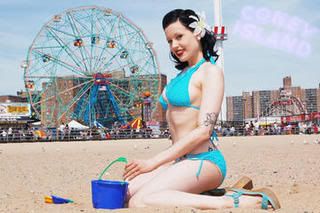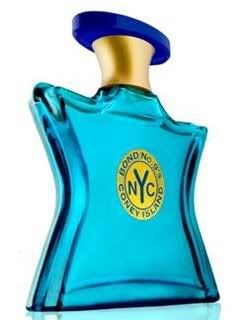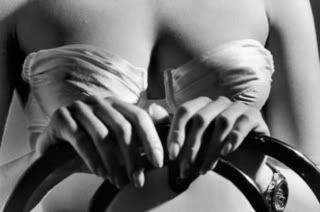
The time is ripe for me to present one of the better known niche brands with a unique concept that is not actually centered on an olfactory vision or a conceptual design, but instead on one of the most fascinating cities in the whole world: the Big Apple; New York and its exciting neighbourhoods, each one of them captured in a luxurious bottle reflecting its qualities and landmarks in aromas that entice.
Bond no.9 is the brainchild of Laurice Rahmé, a modern woman of firm business savvy, born in Paris, living in New York for the past 25 years and formerly known for her distribution of the prestigious Creed brand in the USA. Laurice began her career as an antiques dealer having studied art at the Louvre in Paris. But pretty soon she joined Lancôme-Paris as international training director, became the director of the Lancôme Institut de Beauté in 1976 and relocated to L’Oréal USA’s headquarters (formerly Cosmair) in New York City. In 1989, Rahmé became the partner of Annick Goutal’s operations in New York and contributed to the brand reaching cult status among the congnoscenti and sales that amounted to 90% of the brands worldwide business. Next, in 1995, Rahmé became the exclusive U.S. distributor for Creed and helped propel it into the conciousness of every discerning customer.
When that became a thing of the past, she realised that her own vision was left to be realised ~according to Bond no.9 website :
In 2001, Rahmé was able to realize her dream of launching her own collection of fragrances named after different neighborhoods in New York City. The collection’s name, Bond No. 9, is derived from the actual address of the flagship store, which is located at 9 Bond St. The store features self-serve stations from which different scents can be sampled and poured into a selection of bottles from one of many freestanding, mannequin-shaped displays. “For me, the store is a continuation of the packaging,” says Rahmé. She now owns and operates a total of four stores in Manhattan.
The concept of the perfumes is "to restore artistry to perfumery and to mark every New York neighbourhood with a scent of its own": from uptown to midtown to downtown, every little speck is covered in the huge collection of 28 women's, men's and unisex eaux de parfum so far in bottles that usually capture the eye and create cravings for luxury.
Of course the claim to restore artistry to perfumery can be pretty much attributed to every niche brand operating under the same principles and indeed that is one of the main reasons for choosing niche over more mainstream products. However the uniqueness of the locale concept is undisputed and always fun to peruse.
Indeed she reached great critical acclaim when her offering Chinatown by young nez (that's french for nose, the perfumer behind this) Aurélien Guichard was highly praised by none other than Luca Turin in one of his articles for NZZ Folio. West Side seems a perennial favourite among perfume afficionados, while my personal favourite remains New Haarlem with its strong coffee notes that make me swoon like a good demitasse and I do enjoy wearing the blackcurrant laced light musk of Scent of Peace. But there's something for everyone in this line.
As Laurice revealed in an interview at Basenotes to Danielle Osbourne on October 26 2006:
“It is the Bond Street store that inspired me to create a brand out of our address, Bond No.9. Yet, it is the events of September 11 that motivated me to make New York smell good again and take on the ambitious project of creating a fragrance for each of its neighborhoods (this was done for Paris, my native city in the 20th century with a dozen fragrances made by a handful of companies created for Paris neighborhoods). Now, in the 21st century it is New York's turn to become the capital of fragrance.”
Myself I find that endearing and respect Laurice for saying this. Additionally a fresh approach and a desire to break the rules and molds of yesterday can be a positive thing after all.

"And where does the new Coney Island fall?" you might ask.
I can tell you that it is a fun scent inspired by one of the most fun locales in New York City.
Purpotedly containing notes of margarita mix (tequila included), melon, guava, cinnamon, chocolate, caramel, musk, vanilla, cedar and sandalwood, it is certainly citrusy in its character and radiates a fun, pool-side languor in tropical sharongs with a fiery bright hibiscus pinned behind one ear.
The booze of the Margarita is very apparent to my nose, with slices of fresh lime and some salty element, adding fun and excitement and making this a great fragrance for a hot day spent at a fun and casual occassion. Just like Coney Island the locale stood for for the 1920s crowd who, aided by public transport, rushed to its shores to enjoy the beach and the fairs.
The salty sweet combination has been explored by Elixir des Merveilles and L de Lempicka recently with great success but in those instances the overall orientalised tone veers the end fragrance in different avenues.
The addition of fruit to the lasting citrus of Coney Island combines with a watery, acqueous element probably due to Calone (which is hinted at by the mention of melon) that manages to not make me shudder -taking my usual tastes into account- because of the slightly warm notes that evolve after a while to give roundness to the sharp start. The slightly spicy heart is evident if one waits a while, while the promisingly gourmand middle is not very pronounced, so people who have a sweet tooth looking forward to the candy floss and chocolate of fun fairs could become a little disappointed; however I do not think it was the brand's intention to construct a gourmand, sweet fragrance in the first place. This is a fragrance to evoke hot sand and drinks with little paper umpbrellas in them, none of the noir ambience that the real Coney island held at some point in Hollywood movies or contrarily the simplistic vanillic sweets of children sucking on lollipops. Today of course Coney Island is famous for its circus and mermaid parades which provide a unique sight replete with the shock value factor that New York City is famous for.
A slight warm amberish and musky accord is melting the whole into a light base in which the announced notes of sandalwood or cedarwood are not particularly evident either, yet it reminds me of a cross between YSL In Love again and Aquasun by Lancaster. Which is a good thing for a summer scent that is meant to compliment and not overwhelm.
According to the Press release:
What is the smell of fun—and how do you bottle it? That was our mission at Bond No. 9 when we decided to capture the essence of Coney Island and turn it into an eau de parfum. Why Coney Island? We were intrigued by the vintage allure of this century-old fantasy-land with its honky-tonk chic, its Mermaid Parade, its incomparable hotdog haven (Nathan’s Famous) fronting the Atlantic Ocean along Brooklyn’s southernmost edge. But we wanted to celebrate its future, too, just as a formidable revival is getting under way.
Coney Island isn’t just any amusement park. In its early 20th century heyday, New York’s premier people’s playground was a rowdy, mind-numbing pleasure-mecca that more than matched the energies of the city that contained it. Its daredevil rides—the legendary nine-hill Cyclone roller coaster … the Wonder Wheel … the freefall Parachute Jump—set a fevered, frantic pace, while its bathing pavilions were more like phantasmagorical gilded palaces that shimmered in the air. Not to forget the raucous nightspots. For a city that where glancing at strangers for more than two seconds has always been an impertinence, here was an escape hatch—a Bacchanalia where one and all had free rein to scream together in terror and joy. Sure, in recent decades Coney Island fell into decline, but today it is decidedly on the upswing, with brand new rides, a water park, and a mammoth glass atrium in the works.
Bond No 9’s Coney Island conjures up both the magical history and the reawakening of this beachfront paradise. Combined in this contemporary gourmand delight are the sugar-cool notes of margarita mix, hypnotically seductive chocolate and caramel, plus cedarwood. The high-voltage blue bottle recalls the Coney Island’s expanse of sea and sky, while the contrasting gold neck evokes the thousands of electric lights that once lit up its night sky.
The turquoise bottle is fetching in its bright shade garlanded by a ribbon of gold as if to represent little blub lights of fun fairs, although not as covetable as the bottle of Chinatown in all its Swarovski glory.
The new fragrance will officially launch on June 1st, but the stores take pre-orders by mid-May. It is sold at all four Bond No. 9 stores, at selected branches of Saks Fifth Avenue, and at Harvey Nichols, Harrods, Paris Gallery, Lane Crawford. Besides being available in its 3.4 oz. artist-designed superstar bottle and box presentation ($180), 1.7oz travel size ($125), Coney Island may be purchased by the ounce ($40), either in a 2-ounce basic spray flacon with gilt honeycomb cap ($25) or in unique vintage or art bottles, featured in a wide variety of designs ($60 - $200).
Bond no.9 perfumes can be ordered online at the official Bond site and at First in Fragrance/Aus liebe zum duft in Europe.
Top pic from Coney Island photoshoot on April 21 2007 by Mike on photomeetup.com
Pic of bottle comes from the advertising campaign of Bond no.9
.jpg)





.jpg)

